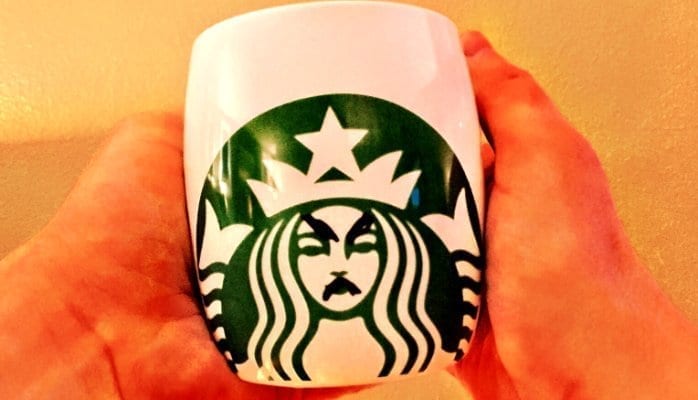Frivolous cases like this one, in which three apparently unhappy Starbucks customers filed suit against the coffee giant for “overcharging customers by underfilling lattes and mochas to reduce milk costs,” waste court time.
In the currently litigious landscape of the American judicial system, cases often arise that truly have merit – product liability cases, for instance, where thousands of innocent Americans are injured. And then, there are cases like this one, in which three apparently unhappy Starbucks customers filed suit against the coffee giant for “overcharging customers by underfilling lattes and mochas to reduce milk costs.” The details of this case are as ridiculous as Niles Crane from the Frasier sitcom ordering a “double-short, low-fat, no-foam latte.” Fortunately, this frivolous case was dismissed, making room on the docket for more serious cases to be heard.
Last week, U.S. District Judge Yvonne Gonzalez Rogers, an Obama appointee, tossed out the potential class-action suit due to a lack of evidence supporting the plaintiffs’ claims.
So, what exactly were the plaintiffs claiming? Their suit stated that Starbucks’ mochas and lattes were roughly 25% underfilled. They also argued that the company’s cups couldn’t actually hold the advertised volume of the drinks in question. Two California plaintiffs, Benjamin Robles and Siera Strumlauf, were joined by New York plaintiff, Brittany Crittenden in the suit alleging fraud and false advertising on Starbuck’s part regarding the company’s 12-, 16-, and 20-ounce lattes and mochas. The plaintiffs also argued that the company was using excessively low “fill-to” lines on the pitchers used by baristas for steaming milk, and that baristas were told to shortchange customers on ingredients, i.e., “leaving a quarter-inch of space atop drinks.” The suit claimed unspecified damages.
For its part, Starbucks responded that the cups in question actually hold more than the advertised volume. Further, it explained that the purpose of the “fill-to” lines was to show baristas how much cold milk to use in the pitchers. Cold milk expands when steamed, so the lines actually cut back on milk waste.
Judge Rogers, based in Oakland, California, took issue with another of the plaintiffs’ claims. This one boggles the mind, and it’s no wonder the judge tossed it. The plaintiffs asserted that the foam added to mochas and lattes shouldn’t be counted toward total drink volume. You may now spit your foam all over your reading device of choice at the foolishness of this claim.

The judge stated that the reasonable customer would expect foam to be counted toward drink volume. Even the plaintiffs, after making their claim, admitted that the foam is “an essential ingredient in their drinks.” I suspect that, unless one is Niles Crane and orders a no-foam latte, one would be particularly upset at getting one without the characteristic foam.
In her opinion, Judge Rogers wrote, “Accordingly, plaintiffs fail to show that lattes contain less than the promised beverage volume represented on Starbucks’ menu boards.”
This is not the first time Starbucks has faced such a frivolous lawsuit regarding drink volumes.
There were suits dismissed by two other federal judges back in 2016 that alleged Starbucks was shorting customers regarding iced drinks. The plaintiffs in those suits alleged that the ice shouldn’t be counted toward the volume of their drinks. The two judges found these claims came up short, but the volume of the drinks did not. Their reasoning was that reasonable customers would expect an iced drink to contain ice that is counted toward the drink’s total volume.
One wonders if these plaintiffs should switch to decaf… or find good hobbies.


Join the conversation!